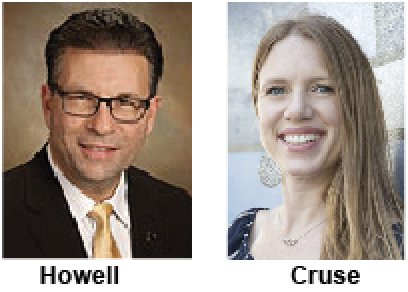Sedgwick County’s use of local tax revenue for older residents is not keeping up with the growth of that population, a new analysis by Wichita State University shows. In fact, per capita spending from that source has fallen 27 percent over the past decade while the population over 60 grew by almost 33 percent.
The figures are contained in an organizational assessment of the county’s Department on Aging prepared by WSU’s Public Policy and Management Center.
In 1982, Sedgwick County voters authorized a levy of up to one mill of property tax to help pay for senior-related services. County commissioners, however, currently set the mill rate at less than half that, in effect leaving several million dollars on the table. Last year, it was estimated that the mill rate of .468 mills set by commissioners would generate $2.4 million, or about 22 percent of the aging department’s total $10.9 million budget. Most of the county’s budget comes from the federal government.
County Manager Tom Stoltz requested the assessment by WSU partly to determine how the Aging Department’s budget compares with similar agencies around the state and country. However, WSU researchers said such comparisons are difficult because many different funding structures exist. Sedgwick County ranked seventh out of 10 agencies whose per capital spending of local tax dollars on older residents was listed.
The report was generally favorable toward the Aging Department, saying: “The department and (its) service providers have a strong commitment to service of older adults which is recognized by the community at-large. The technical expertise and programming of the department is supported by best practices and evidence-based research.”
However, the report said the department could expand collaborative efforts with other organizations that serve seniors.
“Findings indicate that senior centers, service providers and potential new partners have a strong desire to create partnerships and prevent duplication of efforts.”
The department could also improve its communications and marketing efforts, the report said. The report noted that county commissioners had not followed through on a funding agreement with area senior centers.
The report did not recommend raising the aging services mill levy rate but did say “a discussion of funding levels and priorities could help the county address requests for additional funding and expectations for the mill levy.”
Reaction to the report varied among county officials.
“The needs are growing and the dollars are shrinking,” Jim Howell, the county commissioner for District 5, said. “If it’s our responsibility to provide these services, I think it’s fairly obvious to me that we’re not doing our job.”
“I am a supporter of increasing funding, but I want to make sure we’re very diligent in how we spend that money,” said Lacey Cruse, the commissioner for District 4. “This isn’t 1980 or 1990. This is 2021 and seniors have changed.”
Deputy Manager Tim Kaufman noted that thanks to an influx of pandemic relief funds from the federal government, the county has budgeted $12.4 million for the Aging Department, which would be a jump of more than 13 percent from 2019.
Annette Graham, executive director of the Aging Department, said that agency has begun implementing some of the report’s suggestions. “It’s kind of in line with what we were already doing with our strategic plan.”









